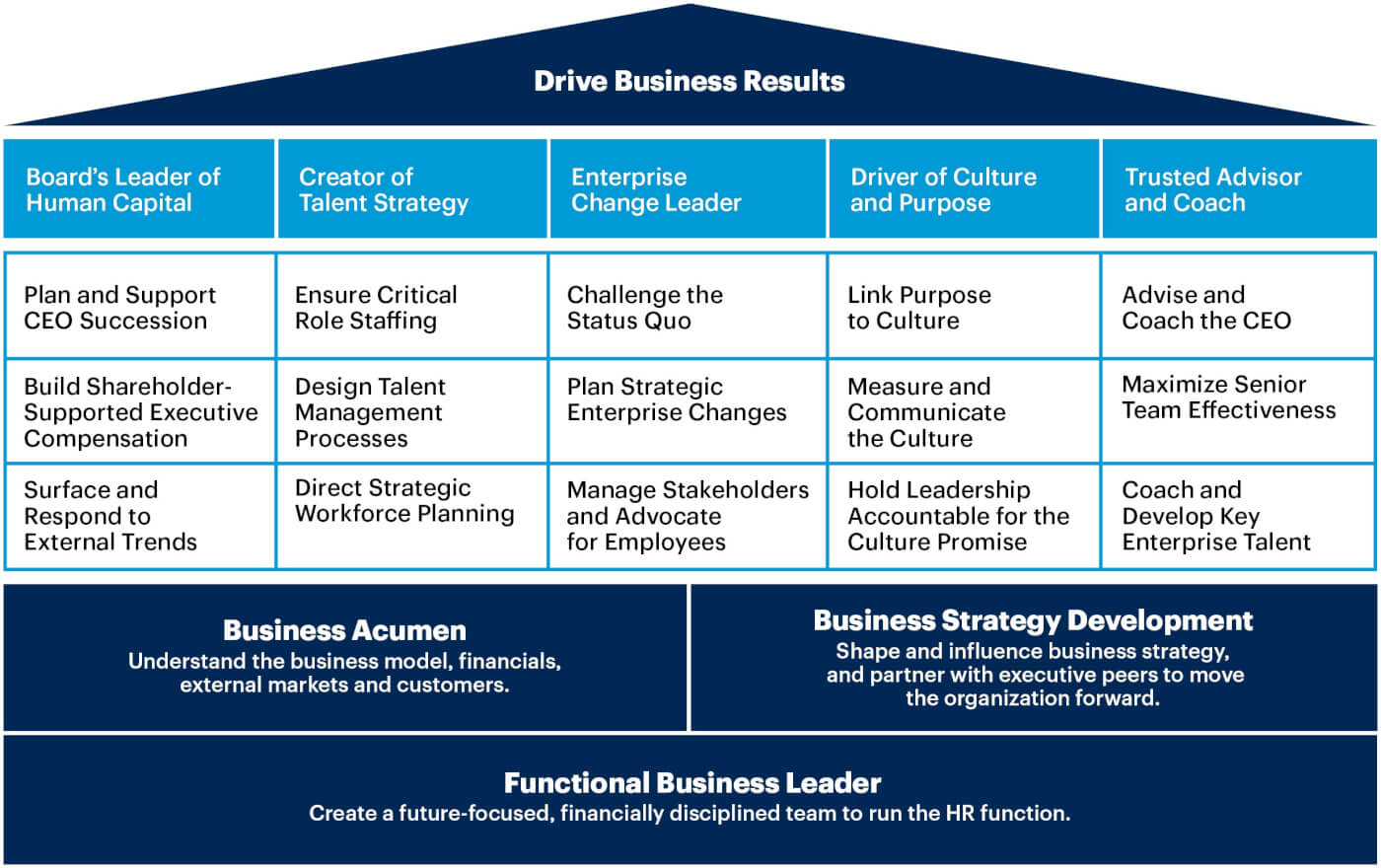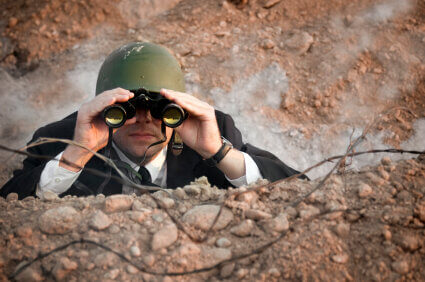Discover the importance of organizational alignment and agility in this blog post. Learn how establishing a strong CORE and building a strategy around it can lead to sustainable growth and success. Find out how alignment and agility empower your organization to thrive in an ever-changing business landscape.

Now You Need a CHRO!
I have always believed that a great Chief Human Resources Officer (“CHRO”) was essential to a business’s success. Most CEOs know that because businesses don’t create value, and people do, they depend on their company’s human resources to achieve success. However, CEOs are distanced from and often dissatisfied with their chief human resources officers (CHROs) and the HR function in general. According to a study, while CEOs see human capital as a top challenge, they rank HR as only the eighth or ninth most crucial function in a company.
In the 1990s, CHROs were focused on compliance to keep their employers out of court and the press. Following several executive pay scandals in the 2000s, they became more involved in remuneration. In the 2010s, they gained a more significant say in hiring for top jobs, as the failed successions multiplied. Recently, they have had to deal with the often very public “me too” troubles.
As a result, CHROs backgrounds are changing. Once filled with people who had master’s degrees in labor relations, today, many hold business degrees. While most firms recruit CHROs from HR jobs, more are choosing outsiders or unconventional candidates. According to Russell Reynolds Associates, HR heads appointed to Fortune 100 companies between 2016 and 2019 were around 50% likelier than earlier hires to have worked abroad, in general management or finance.
The CHRO’s role is to assist the CEO in building and assigning talent, especially key people, and that will help the organization reach its potential. Human capital management now needs the same priority that managing financial capital was in the 1980s.
To accomplish this role, the CEO has to:
-
elevate HR and to bridge any gaps that prevent the CHRO from becoming a strategic partner;
-
understand the valuable contribution the CHRO could be making and spell out those expectations in clear, specific language; and
-
redefining the work content of the chief human resources officer.
In this new role, the CHRO’s responsibilities will include:
-
traditional HR responsibilities—overseeing employee satisfaction, workforce engagement, benefits and compensation, diversity, etc.;
-
predicting outcomes – crystallizing what a particular job requires and realistically assessing whether the assigned person meets those requirements;
-
diagnosing problems – pinpointing precisely why an organization might not be performing well or achieving its goals; and
-
prescribing actions on the people side that will add value to the business – agile companies need flexibility with their human capital, and CHROs should recommend steps that will unlock or create value.
CHROs are expected to have or quickly acquire business acumen specific to the company they are serving, as well as to work with executive peers to shape and influence business strategy. These three areas of expertise are essential for success in any C-Suite position. Gartner has developed a model for the CHROs role, set out below. The five pillars that sit atop the foundation require the CHRO to step beyond HR functional management to lead the business in the critical areas of talent strategy, enterprise change, and company culture, as well as to serve as a trusted advisor to the CEO and the board.

Copyright Gartner
In this new role, CEOs and CHROs have to ask more of each other.
CEOs: Ask for and expect more from your CHRO
-
Expand Your Thinking. If your expectations for the CHRO role are just the traditional HR function, 90 percent of the opportunity is lost.
-
Critical Skills. What are the essential skills required for your CHRO? Today’s CHRO role requires a wide range of additional strengths, i.e., the ability to use data and analytics to drive strategy and organizational design; a structured way of thinking; and excellent people-assessment skills.
-
Align priorities. Use the model for candid conversations about priorities. Since CEOs don’t have a clear idea of where CHROs spend their time, this will provide a framework for expectations and performance evaluation.
-
Expanded Role. Beyond the traditional HR function, the CHRO needs skills that impact business success, i.e., social media, customer, and employee activism, changing employee expectations of jobs and the work environment, the gig economy, and many more.
-
Interview Better. When interviewing for a CHRO, key considerations: Do you trust them? Are they looking three to five years ahead to determine talent strategy? Do they have a firm grasp on business dynamics within your industry and your company? Are they able to connect the dots between your company’s mission, values, and every other aspect of the business?
CHROs: ask for and expect more from your CEO
-
Role. Since many CEOs don’t understand the purpose, show how the CHRO adds value to the organization and is a crucial player in the C-Suite.
-
Priorities. Ensure HR priorities are aligned with business priorities.
-
Build and maintain a strong team. As traditional HR requirements never go away, ensure the team to keep those functional areas moving smoothly while the CHRO focus aspects that directly drive business success.
-
Know your strengths and weaknesses. The CHROs role will continue to increase, so understand where you already provide value, and where they need to grow.
Many companies have not lifted the CHRO to this new role or seen the benefits that they offer; however, the coronavirus crisis has thrust corporate HR chiefs into the spotlight. A CHRO can make or break a company during a pandemic. Never before have more firms needed a hard-headed HR boss.
During the 2008 financial crisis, there was the mantra, “A good CFO could save a company; a bad one might bury it.” Covid-19 now requires a strategic CHRO that is part of what Harvard Business Review calls the G3 – CEO, CFO, and CHRO. CHROs are critical at this time because they are responsible for keeping employees healthy; maintaining morale; overseeing a rapid move to vast remote-working, and, as firms retrench, consider whether, when, how, and who to lay off. How you treat people during this time will live as part of your reputation and culture long after the pandemic is passed. I heard of a company that laid off 300 employees last week and did it with a prerecorded Zoom message. So much for putting employees first! Unlikely the best and greatest will be knocking their doors down when this is passed.
The pandemic makes such “people analytics” more relevant. Beth Galetti, Senior Vice President of Human Resources at Amazon, is an engineer with no HR experience. She oversees 1,000 developers working exclusively on HR software. Amazon’s pre-outbreak investment in digital induction for fresh hires is paying off. “We onboarded 1,700 new corporate employees on [March 16th] alone,” Ms. Galetti reports. Covid-19 may lead to more HR chiefs to adopt such digital systems to improve HR functionality, which will last long after Covid-19 is gone.
At the moment, many CHROs have a multitude of problems. Mala Singh, chief people officer at EA, represents the C-Suite on the pandemic response team, which occupies 60-70% of her day. Her team has been getting staff desks, computers, even noise-canceling headphones for work from home. A significant concern was balancing work with child care, so Ms. Singh gave the caregivers on EA staff as much time as they needed to adapt without using up paid leave. She is digitally monitoring employee sentiment, particularly anxiety. In all businesses, but especially creative ones like EA’s, “having someone stressed about their family situation does not enable productive work,” she explains.
In many companies outside the knowledge industry, HR leaders must strike a balance between treating staff decently and the bottom line. While the instinct is to cut costs through mass layoffs, the crisis provides strategic CHROs with the opportunity to reconfigure company workflow. What needs to be done by whom, what can be automated, and what requires people to share the same space? Workers who were initially considered redundant may be redeployed or reskilled.
The most strategic CHROs should be looking to the other side of the crisis for what skills they may need and start courting key talent wherever it is. Since everyone is working from home, no one is listening to personal calls. For a savvy CHRO, “it’s the perfect recruiting opportunity.”
For those companies that believe they are too small to have a CHOR, I recommend a part-time CHOR who can provide the essential skills required, and leave many of the traditional HR responsibilities to a Professional Employer Organization, i.e., Insperity. PEOs allow the organization to have a full set of HR services while benefiting from the strategic input of a CHOR.
While budgets are tight and you are letting people go, one of the last people you will consider laying off is your CFO; however, maybe you should be considering adding CHOR to manage your human capital better. After the crisis, there will be fantastic talent available to those that are poised to get it.
Copyright (c) 2020, Marc A. Borrelli
Recent Posts
Align and Thrive: The Importance of Organizational Alignment and Agility
How to Achieve Smart Time Management: 10 Tips for Busy Professionals
When you are a busy professional running your own business, it can often feel like there aren’t enough hours in the day to accomplish everything. Being strategic with your time is the best (and possibly the only) way to achieve all of your daily tasks. If you are...
5 Strategic Leadership Skills Every Manager Needs
So often, people view leadership as a talent: you’re either born with this quality or you’re not. However, this is not always the case! In reality, good leadership is made up of skills, and anyone can learn how to improve. Some people may pick up leadership attributes...
How the Sellability Score is Calculated: The Ultimate Guide
Do you have questions about how to calculate your business’s sellability score? Whether you’re looking to sell your business in the near future or years from now, understanding your sellability score will help you thrive. The sellability score identifies the...
The Top 5 Benefits of the Entrepreneurial Operating System
As an entrepreneur running your own business, you know there are bumps in the road and struggles that both you and your business will face over time. However, with the right people and tools at your disposal, you can anticipate what’s coming, plan for it, and continue...
5 Ways to Use Email Automation to Boost Traffic
Every single business in the world wants to evolve and grow. This will happen using a variety of techniques and strategies. In 2022, digital marketing is more than a household name, and most companies will adopt at least a few ideas when long-term planning and coming...
6 Questions To Ask A Potential Business Coach Before Hiring Them
Many entrepreneurs consider executive business coaching when they start struggling on their professional path. A small business coach is an experienced professional mentor who educates, supports, and motivates entrepreneurs. They will listen to your concerns, assess...
3 Ways Proper Long Term Strategic Planning Helps Your Business
Dreams turn into goals when they have a foundation of long-term strategic planning supporting them. They become reality when the ensuing strategic implementation plan is executed properly. With Kaizen Solutions as their strategic planning consultant, small and...
What is a Peer Group, and How Can it Improve Your Career?
If you are a CEO or key executive who has come to a crossroads or crisis in your career, you'll gain valuable insights and solutions from a peer group connection more than anywhere else. But what is a peer group, and how can that statement be made with so much...
Profit and Revenue are Lousy Core Values
As I mentioned last week, I am down with COVID and tired, so spending more time reading rather than working. I read Bill Browder's Freezing Order this weekend, and I highly recommend it. However, at the end of the book, Browder says that oligarchs, autocrats, and...













